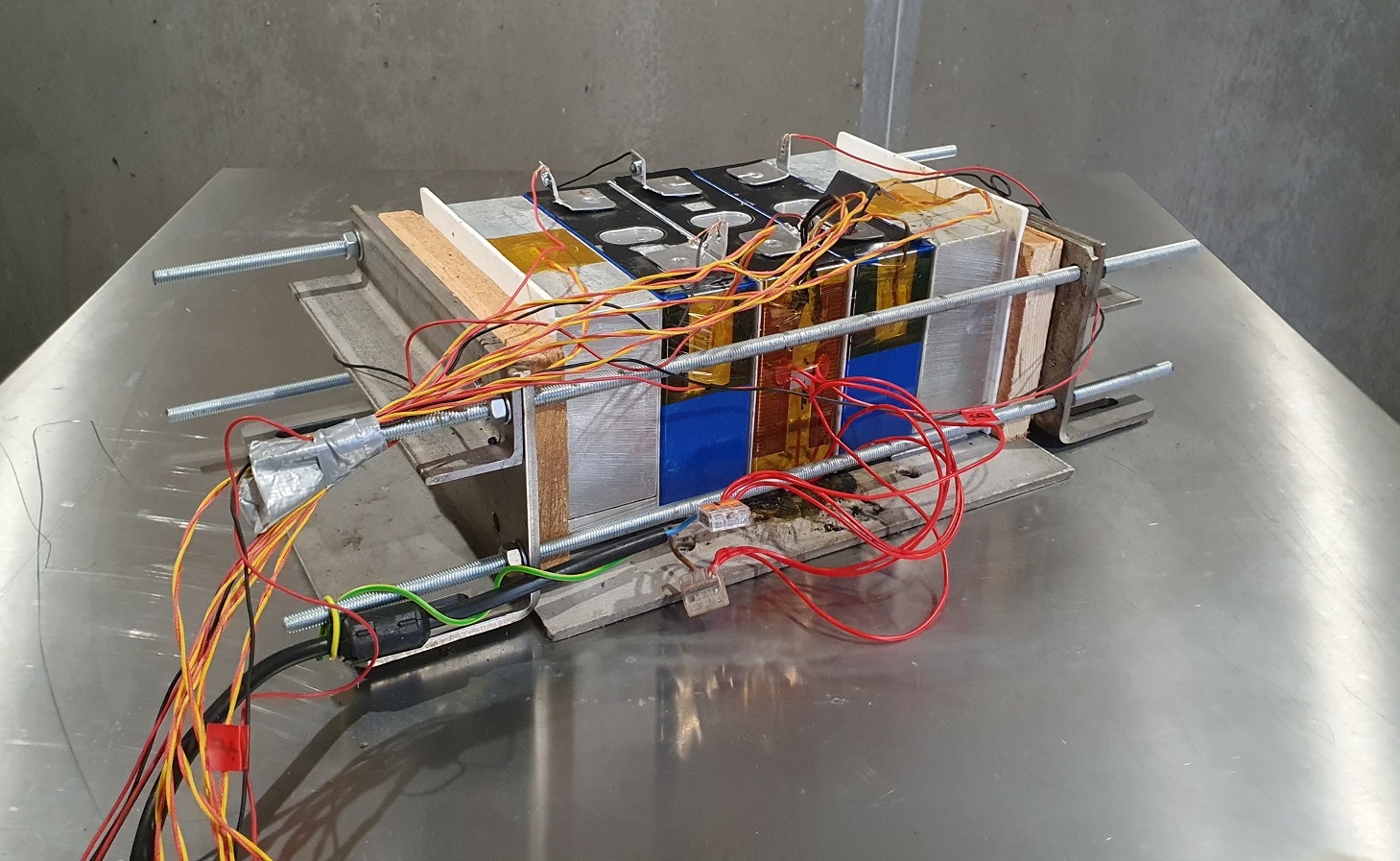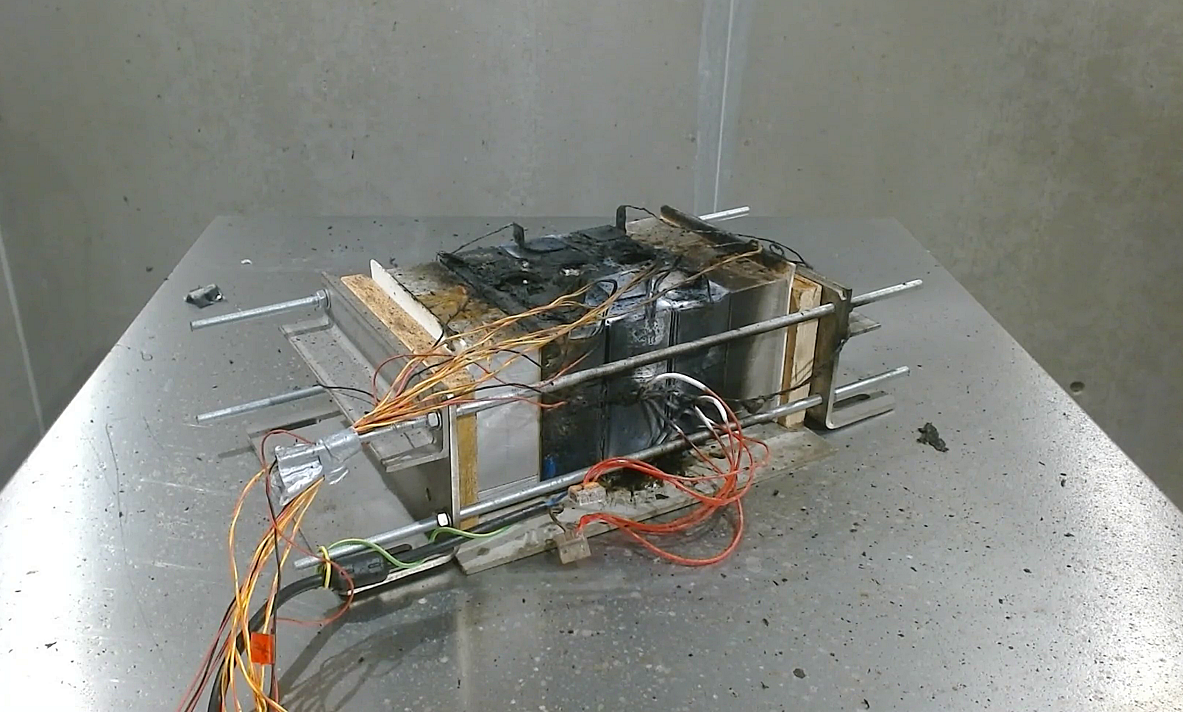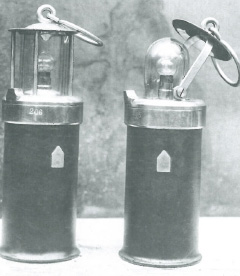Cell-to-cell Separator: A Part as Unspectacular, as it is Indispensable
Technology
January 8. 2025
2 min.
Extinguishing lithium-ion batteries is very hard to say the least, as they contain the fuel that keeps them burning. The best way to deal with this is to prevent fire in the first place.

Ever heard of an EV or a cell phone burning down because its battery failed? As rare as these incidents are, lithium-ion cells are indeed prone to thermal runaway. It occurs when the cell starts heating up uncontrollably due to a chemical chain reaction that can be very difficult to stop. The phenomenon may be triggered by charging the battery in a wrong way, or be the result of a short circuit, such as when the cell is punctured or suffers other external damage.
The cell can also be short-circuited internally due to dendrite growth. These needle-shaped crystals form around impurities left over from the production process and eventually get into contact with the opposite electrode. The probability of a production fault causing a Li-ion cell to experience thermal runaway may be less than one in millions. But given how many Li-ion cells are being produced today, it does occur.
And it's not just about flames. For instance, a 100 Ah lithium-iron-phosphate (LFP) cell undergoing thermal runaway produces around 75 liters of gas with hydrogen content of about 50 percent, and a 280 Ah cell even 220 liters of highly flammable gas. Depending on its concentration, if the reaction spreads over dozens or hundreds of individual cells, an explosion capable of bringing down an entire building can occur. The key is therefore to prevent the spread of temperature (a phenomenon known as thermal propagation) by inserting a high-quality separator between each cell.

Heat it up and see what happens
This is exactly what the colleagues at GAZ' R&D focus on in abuse tests based on the UL 9540A methodology, a testing procedure developed in the United States. It involves sticking an external heater onto the cell, i.e. a very thin resistance wire in the shape of a foil. It makes the cell's temperature rise by 4 to 7 °C per minute until it reaches critical values of above 200 °C, at which moment the membrane separating the cell's electrodes collapses and thermal runaway occurs. Within about a second, cell temperature jumps to 400 °C or more, and the energy accumulated in it is released in the form of heat. Which eventually starts propagating to neighboring cells.
For the LFP cells that GAZ Energy battery storages consist of, our R&D team is therefore testing different cell-to-cell separator materials, while also comparing batteries from different manufacturers. They came across some that only had a strip of polyethylene inserted between the individual cells, which melts at around 120 °C. Some of the batteries even lacked a cell-to-cell separator altogether. Or their terminals were so poorly designed that the entire three-cell test battery burned out within a minute.
So, what did our colleagues find out? The most effective separator they have identified can actually prevent propagation. It is still undergoing trials, and we do not want to disclose it. Let’s just say that, apart from our technicians’ material of choice, various types of aerogels work very well too, especially those based on silicon. The key take-away is that industrial users should pay attention to whether their Li-ion batteries are sufficiently secured against thermal propagation which includes a high-quality cell-to-cell separator. Or, better source your Li-ion batteries from a trusted manufacturer rather than just somewhere.
Related articles
What else can Electrolyte do
October 10. 2024
2 min.
View moreCutting Energy Purchase by a Third? Perfect Task for Batteries
September 5. 2024
2 min.
View moreWill Sodium replace Lithium in Batteries? It might, but it won't
August 19. 2024
3 min.
expert article
View moreLithium-Sulfur: On the Brink of a Revolution
February 22. 2024
3 min.
expert article
View more



